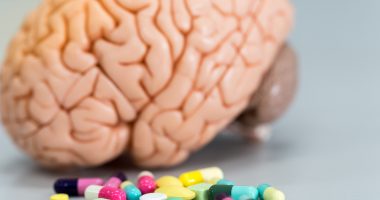Preclinical Results Pave Way for Human Trial of BMB-101 Oral Therapy

Nearly one month of repeated dosing of BMB-101, Bright Minds Biosciences’ experimental oral therapy for Dravet syndrome, was found to be safe and well-tolerated in mice and dogs.
These were the findings of toxicology studies that began in September and are intended to support regulatory clearance of clinical trials.
Based on these and other positive results showing that the therapy eased seizures in a zebrafish model of Dravet, Bright Minds plans to initiate the first-in-human trial of BMB-101 in the coming months.
“Dravet Syndrome, a severe form of epilepsy characterized by frequent, prolonged seizures, is a terribly debilitating disease and, unfortunately, remains an area of high unmet medical need,” Revati Shreeniwas, MD, Bright Minds’ chief medical officer, said in a press release.
“These data, generated in our 28-day toxicology studies, provide further support for advancing our clinical program,” Shreeniwas added. “We’re encouraged and hopeful that BMB-101 will provide a new and effective approach [for treating Dravet].”
BMB-101 was first developed by Alan Kozikowski, PhD, Bright Minds’ chief scientific officer, and his post-doctoral student Jianjun Cheng, PhD, while working at the University of Illinois, in Chicago.
It is an orally available molecule that selectively activates 5-HT2C, a cell surface receptor protein of serotonin. Serotonin is a key chemical messenger that allows communication between nerve cells, and increased serotonin levels and receptor activation have been shown to protect against seizures.
BMB-101 was previously shown to effectively reduce seizure duration and frequency in a zebrafish model of Dravet, suggesting that it may have similar beneficial effects in patients.
The treatment also has a more specific action than lorcaserin — Eisai’s oral 5-HT2C activator that is currently being tested in Dravet patients in a Phase 3 trial (NCT04572243) — and therefore is expected to have a more favorable safety profile, according to Bright Minds.
In the latest safety and toxicology preclinical studies, conducted by Bright Minds’ contract research partner, ITR Laboratories Canada, the oral therapy was administered to healthy mice and dogs, twice a day for 28 days. Mice received up to 40 mg/kg of BMB-101 per day, while dogs were given up to 30 mg/kg per day.
Results showed that the therapy was well-tolerated at all dose levels, with no major toxic effects, including in target organs.
In addition, in both species, the researchers were able to determine the highest dose of BMB-101 not associated with a significant increase in the frequency or severity in adverse events. This information is typically used to select starting dose levels and establish safety criteria for human trials.
“We are delighted to have completed this important milestone, which is pivotal for supporting our forthcoming first-in-human clinical trial,” said Ian McDonald, Bright Minds’ CEO.
“We have now officially entered the clinical development stage for our lead product, BMB-101, which represents an exciting new chapter for the Company and, hopefully, therapeutic alternative for patients suffering from Dravet Syndrome.”
BMB-101 is also being developed as a potential treatment for opioid use disorder, binge eating disorder, and Alzheimer’s disease.








